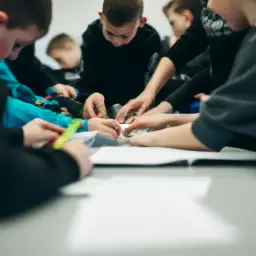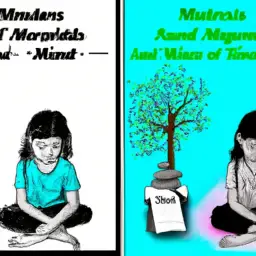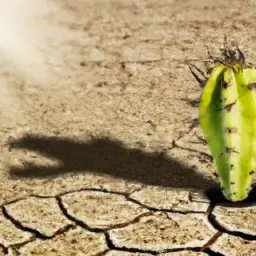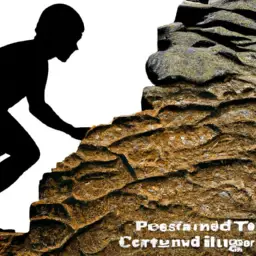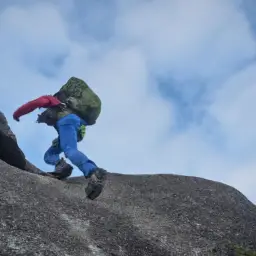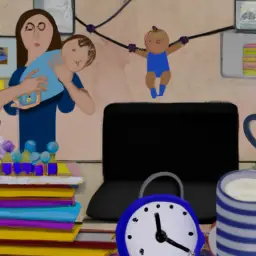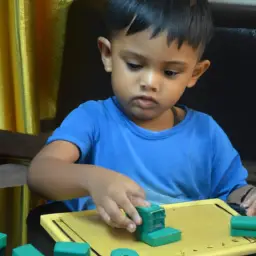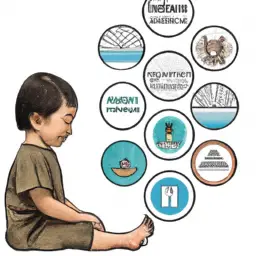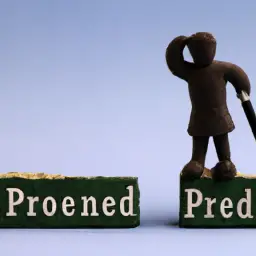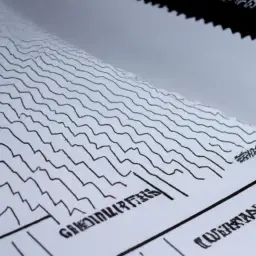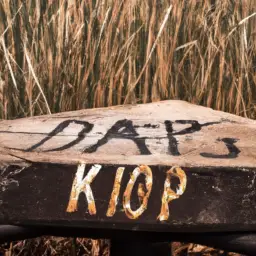If you’re a teacher, you know that building grit in your students is essential for their success beyond the classroom. Grit is the ability to persevere through challenges and setbacks, and it’s a quality that can be developed over time.
One of the most effective ways to build grit in your students is through feedback. Feedback is a powerful tool that can help students learn from their mistakes, grow their skills, and develop resilience.
In this article, we’ll explore the role of feedback in building grit and provide you with effective approaches for incorporating feedback into your teaching. We’ll discuss how to provide positive and constructive feedback, create a safe and supportive learning environment, use technology to enhance feedback and learning, encourage self-reflection and self-assessment, and evaluate and adjust your feedback strategies.
By the end of this article, you’ll have a better understanding of how feedback can help your students develop grit and the tools you need to incorporate effective feedback into your teaching.
Key Takeaways
- Feedback frequency is crucial for faster adjustments and learning.
- Balancing praise and critique is key to providing effective feedback.
- Encouraging student self-reflection is another way to provide effective feedback.
- Timely and consistent feedback is important to help students build their grit.
Understanding the Importance of Feedback in Building Grit
You can’t build grit without feedback! It’s like trying to build a sandcastle without a shovel – you need the right tools to get the job done.
Feedback is an essential part of building grit because it gives you a sense of progress and helps you identify areas where you need to improve. Feedback frequency is also crucial because the more often you receive feedback, the faster you can make adjustments and learn from your mistakes.
Additionally, feedback is an excellent way to cultivate a growth mindset, which is essential for building grit. A growth mindset is the belief that your abilities can improve with hard work and dedication.
Feedback provides an opportunity to practice this mindset by encouraging you to view mistakes and challenges as opportunities for growth rather than failures. By embracing a growth mindset and seeking out feedback, you can build the resilience and perseverance necessary to develop grit.
Providing Positive and Constructive Feedback
Offering specific examples of what a student did well and areas for improvement can help create a clear picture of their progress and encourage continued growth. Balancing praise and critique is key to providing effective feedback.
When acknowledging a student’s strengths, make sure to be specific about what they did well and provide examples. This will give them a clear understanding of what they’re doing right and why it’s working. However, it’s also important to provide constructive criticism to help them improve. When identifying areas for improvement, be specific and provide examples of what they could do differently. This will help them understand what they need to work on and how to improve.
Encouraging student self-reflection is another way to provide effective feedback. When students reflect on their own work, they can identify their strengths and weaknesses and set goals for the future.
One way to encourage self-reflection is to ask open-ended questions that prompt students to think critically about their work. For example, you could ask them what they learned from a particular assignment or what they could do differently next time. By asking these types of questions, you’re empowering students to take ownership of their own learning and encouraging them to be self-motivated.
Creating a Safe and Supportive Learning Environment
To create a safe and supportive learning environment, you need to establish trust and open communication with your students. Encourage collaboration and peer feedback to foster a sense of community in your classroom.
Emphasize the value of mistakes and failure as opportunities for growth and learning.
Establishing Trust and Open Communication
Establishing trust and open communication with students is like planting seeds for a fruitful garden of growth and resilience. It’s important to build trust with your students so they feel comfortable sharing their thoughts and feelings with you.
This can be achieved by actively listening to them and showing that you care about their concerns. When a student feels heard and understood, they’re more likely to trust you and feel safe in your classroom.
Open communication is also essential for building grit in your students. Encourage them to share their successes and failures with you, and provide constructive feedback to help them improve.
By creating a safe and supportive environment for open communication, you’re fostering a culture of growth and resilience. When students can communicate openly with their teacher, they’re more likely to persevere through challenges and develop the grit needed to achieve their goals.
Remember, building trust and open communication takes time and effort, but the benefits are immeasurable.
Encouraging Collaboration and Peer Feedback
You can create a dynamic classroom environment by fostering collaboration among your students, where they work together to achieve common goals and share their knowledge with each other. In doing so, you’re not only promoting positive group dynamics, but you’re also providing an opportunity for students to develop their grit.
Encouraging collaboration allows students to learn from each other’s strengths and weaknesses, and peer feedback provides a valuable perspective that can help students improve their work. To effectively implement collaboration and peer feedback in your classroom, consider the following tips:
- Assign group projects that require students to work together towards a common goal, such as creating a presentation or solving a complex problem.
- Provide clear guidelines and expectations for each group member’s responsibilities.
- Encourage students to communicate openly and respectfully with each other to resolve conflicts and stay on track.
Incorporate peer evaluation into the project, where students provide constructive feedback on each other’s work. Provide a rubric or guidelines to ensure that feedback is specific and helpful. Encourage students to use the feedback to improve their work and reflect on their own strengths and weaknesses.
By fostering collaboration and peer feedback, you’re not only promoting a positive classroom environment, but you’re also providing opportunities for your students to develop their grit and grow both academically and personally.
Emphasizing the Value of Mistakes and Failure
Emphasizing the value of mistakes and failure can help you develop a growth mindset and become more resilient in your academic and personal lives. When you make a mistake or experience failure, it can be easy to feel discouraged and give up. However, if you view these experiences as opportunities to learn and grow, you can develop a more positive and productive outlook on life.
One effective way to emphasize the value of mistakes and failure is to create a classroom culture that celebrates learning and growth, rather than just grades and test scores. Encourage your students to take risks and try new things, even if they might make mistakes along the way.
When mistakes do happen, use them as teaching moments and help your students understand what they can learn from the experience. By doing so, you can help your students become more resilient, confident, and successful learners.
Using Technology to Enhance Feedback and Learning
You can enhance your feedback and learning strategies by utilizing online tools and platforms that offer interactive and personalized feedback.
These tools can provide a unique opportunity for students to receive timely and consistent feedback that is tailored to their individual learning needs.
By incorporating these resources into your teaching, you can create a more effective and efficient learning environment that supports students in developing their grit and achieving their academic goals.
Leveraging Online Tools and Platforms
Using online tools and platforms can significantly enhance the effectiveness of feedback in building grit among students. Collaborative learning tools like Google Docs and Padlet allow students to work together in real-time, providing feedback and support for each other. This peer-to-peer feedback can be especially beneficial in building grit as students learn to rely on each other and persevere through challenges together.
Gamification is another tool that can be leveraged to enhance feedback and build grit. Online platforms like Classcraft and Kahoot! allow teachers to create engaging and interactive learning experiences that incentivize students to persevere and push themselves further. These platforms can provide immediate feedback to students, which helps them learn from their mistakes and improve their performance.
By incorporating gamification into their teaching, teachers can create a more supportive and engaging learning environment that fosters grit and resilience in their students.
Incorporating Interactive and Personalized Feedback
One way to enhance your students’ learning experience and foster their resilience is by incorporating interactive and personalized feedback into your teaching.
Interactive engagement allows students to actively participate in the learning process and receive immediate feedback on their work. You can achieve this through various means such as quizzes, games, and simulations, which not only help students learn but also make the process enjoyable and engaging.
A personalized approach to feedback means tailoring the feedback to the individual needs of each student. This can be done by providing specific feedback on areas of improvement, recognizing their strengths, and encouraging them to take on challenges.
Personalized feedback shows students that you value their unique abilities and are invested in their growth. By incorporating both interactive engagement and personalized feedback, you can create a positive learning environment that encourages your students to persevere through challenges and develop the grit necessary for success.
Providing Timely and Consistent Feedback
When providing timely and consistent feedback, it’s important to remember that students benefit greatly from receiving immediate responses to their work. This means that as a teacher, you should aim to provide feedback as frequently as possible, without sacrificing the quality of your responses. By doing so, you are helping your students build their grit, as they are able to see the progress they are making and receive the reinforcement they need to continue working hard.
To help you understand the importance of balancing feedback frequency and quality, here is a table to guide you:
| Feedback Frequency | Feedback Quality | Impact on Students |
|---|---|---|
| High | High | Students feel supported and motivated to continue working hard |
| Low | High | Students may feel discouraged and lose motivation due to lack of feedback |
| High | Low | Students may feel overwhelmed and not know how to improve |
| Low | Low | Students may feel neglected and not see the value in their work |
By keeping this table in mind, you can ensure that you are providing timely and consistent feedback that is both frequent and of high quality. This will help your students develop grit and become more resilient in the face of challenges.
Encouraging Self-Reflection and Self-Assessment
Take a moment to reflect on your own progress and assess your strengths and weaknesses. As a teacher, it’s important to encourage your students to engage in self-reflection and self-assessment. By doing so, they can identify areas where they need to improve and set goals to work towards.
One effective self-reflection technique is to have students write in a journal about their learning experiences. This can help them process their thoughts and feelings about what they’ve learned and how they can apply it in the future. Additionally, goal setting strategies can help students stay motivated and focused on their learning. Encourage them to set specific, measurable, achievable, relevant, and time-bound (SMART) goals that align with their interests and abilities.
As a teacher, you can also provide opportunities for students to receive feedback from their peers. Peer feedback can be a powerful tool for self-reflection and self-assessment. Encourage students to give constructive feedback to their classmates and to use that feedback to improve their own work. This can help them develop a growth mindset and build resilience in the face of challenges.
By encouraging self-reflection and self-assessment, you can help your students develop the grit they need to succeed in school and beyond.
Evaluating and Adjusting Feedback Strategies
You’ve just learned about the importance of encouraging self-reflection and self-assessment in building grit. Now, it’s time to dive into evaluating and adjusting feedback strategies to maximize their effectiveness.
Feedback effectiveness is crucial in building grit, and it’s essential to evaluate the feedback you’re providing to your students regularly. One way to do this is by asking for their input and using it to adjust your approach.
Students may have different learning styles, and what works for one may not work for another. Therefore, it’s important to tailor your feedback to each student’s needs and adjust accordingly.
Additionally, it’s crucial to provide timely feedback to your students to help them understand how they’re progressing and identify areas that need improvement. By doing this, you’ll be helping them develop a growth mindset and building their resilience to challenges.
Conclusion
Congratulations! You’ve learned about the crucial role of feedback in building grit and effective approaches for teachers to provide feedback.
By providing positive and constructive feedback, creating a safe and supportive learning environment, using technology to enhance feedback and learning, encouraging self-reflection and self-assessment, and evaluating and adjusting feedback strategies, you can help your students develop resilience and perseverance in the face of challenges.
Remember, grit isn’t just about talent or intelligence; it’s about the ability to persist and overcome obstacles. As a teacher, you have the power to nurture grit in your students by providing them with meaningful feedback that encourages and supports their growth.
By implementing these strategies, you can help your students develop the skills they need to succeed in school and beyond. Keep up the great work!




